- Home
- Blog
- Additives and Labels
- The Health Star Rating – what is it and what does it mean for you?
The Health Star Rating – what is it and what does it mean for you?
Written by Catherine Saxelby
on Monday, 18 August 2014.
Tagged: food labels, Health Star Rating, healthy eating, healthy lifestyle, label

The Health Star Rating (HSR) system ranks food products on a scale from half to five stars on the front of food packs. Like the energy rating you spot on fridges and washing machines, the more stars the better. Foods with five stars being the best nutritional choice.
It’s meant to help us decide whether or not to buy a packaged food product like a bar, cereal, bread or meal base, but how useful is it really?
Easy and on the front of the pack
Like the familiar red Tick from the Heart Foundation, the new star rating is designed to give shoppers easy, at-a-glance information.
Approved in 2014 after a lengthy three-year debate, it will start to appear on the front of food packs over the next year or so.
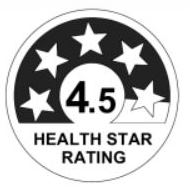
These four aspects of a food - kilojoules, saturated fat, sodium and total sugars - are associated with an increase in the risk factors for chronic diseases like type 2 diabetes, heart disease, gallbladder disease and obesity which is why they’re the basis for the rating.
This is balanced against the content of fruit, vegetable, nuts or legumes (fvnl). It can also show one single ‘positive’ nutrient such as protein or fibre.
| Energy (kilojoules) |
| Saturated fat |
| Sodium (salt) |
| Sugars (not just added sugar) |
| One 'positive' nutrient such as fibre or protein |
Here’s a mock-up of a full HSR graphic.
For a single serve pack such as a muesli bar or snack pack of crisps, it shows the:
- Health Star Rating both as a number and the stars graphic (the more stars, the better)
- Energy icon for how many kilojoules in the pack
- 3 ‘bad' nutrient icons – these are the ones to keep low
- 1 optional ‘good’ nutrient
All figures must be for 100 g or 100 mL or per pack or per reference portion.
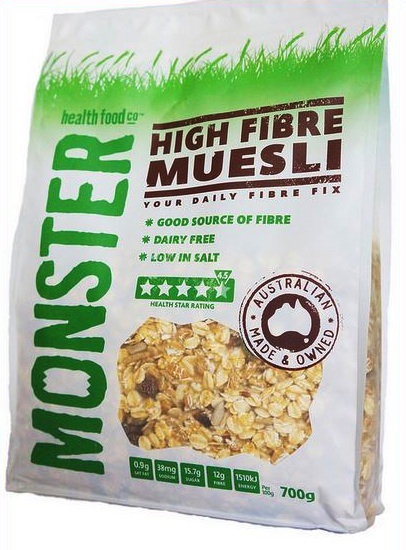 The Monster Health Food Company has already released packaging with the HSR though the graphic doesn’t conform to the one above. As you can see the stars and their nutrient values are separate and colour co-ordinated with the pack colour.
The Monster Health Food Company has already released packaging with the HSR though the graphic doesn’t conform to the one above. As you can see the stars and their nutrient values are separate and colour co-ordinated with the pack colour.
Impressively they maintain they haven’t had to change their recipes to achieve high ratings – from 3.5 to 5 stars.
The HSR system has been coordinated by the Commonwealth Department of Health, working with reps from industry, consumer and public health groups. You’ll find details on the new Health Star Rating website.
The system is to be implemented over the next five years, with a review of progress to take place two years after the commencement date i.e. in 2016.
%DI or Star Rating?
The Health Star Rating is a voluntary scheme so manufacturers can decide whether or not to use it on their packs. They have until January 2016 to change packaging. They can also use it with or without the Daily Intake Guide (%DI) which was their preferred labelling scheme.
As far as I can see, the HSR tells shoppers more and is more meaningful than the %DI which just looks like a set of numbers. Does anyone look at them?
The Health Star system was settled on as a compromise instead of the Traffic Light system, which uses red, yellow and green colours to indicate nutritional value - similar to the school canteen system:
Red Rarely (Stop)
Amber Eat Only Occasionally (Caution)
Green Eat everyday (Go)
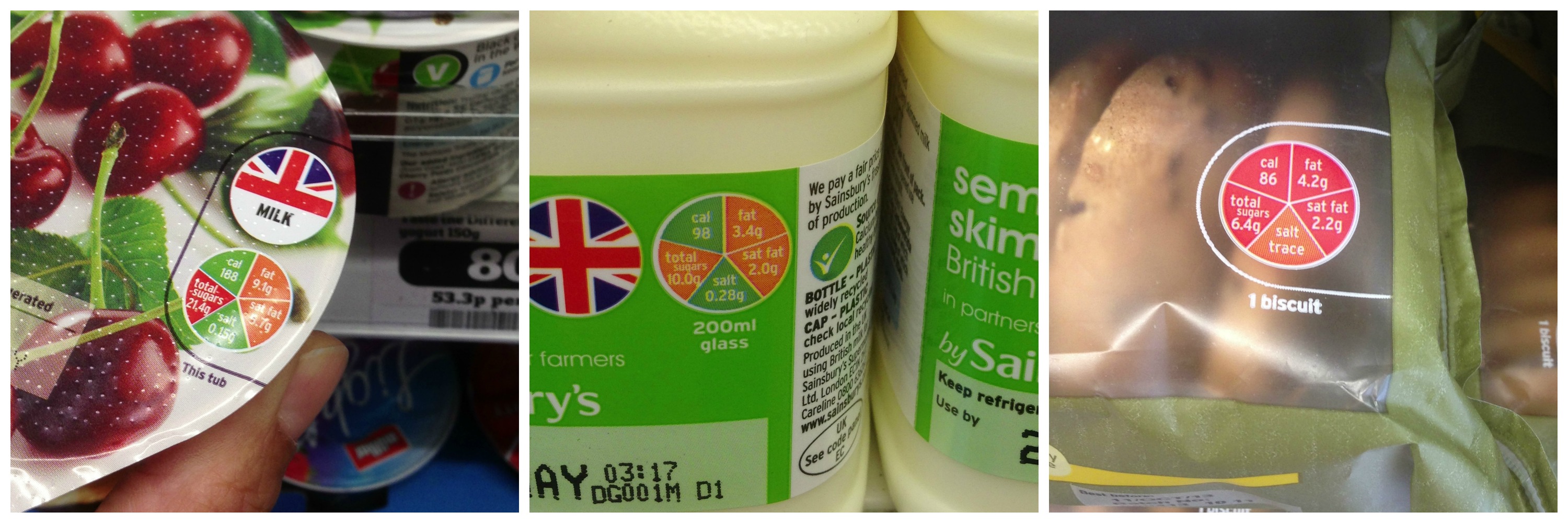
This is the same labelling logo you’ll spot if you shop at Sainsbury’s supermarket in the UK as I’ve done. Take a look at the three Traffic Light examples I snapped on their yoghurt, milk and biscuits in the photos. You quickly get used to looking at how many ‘reds’ are on a food label. Traffic Lights were preferred by consumer groups, but were rejected by the food industry. Probably because it’s easier to see at a glance than the %DI.
Am I in favour of the Health Stars?
At this early point, no. I do prefer the Health Stars over the simplistic Traffic Light system which had only the ONE set of criteria for ALL foods. You can’t compare an oil with 100 per cent fat with a loaf of bread with only 3 per cent fat – they each need their own set of criteria for any guide to be meaningful. Read my reasons why on Jemma O’Hanlon’s guest post on the Traffic Light Tracker App here.
I much prefer the Tick where there are over 30 categories each with a separate criteria behind your product getting the red logo or not. The Tick doesn’t dazzle shoppers with all the calculations - which are done behind the scenes. Read why I’m in favour of the Tick here.
- One drawback of the Tick is that manufacturers have to pay to be included in the system and small food companies can’t always afford the impost even though their foods may be healthy.
- The Stars rating tells shoppers more and is more meaningful than the %DI.
- It’s gone through many rounds of revisions with later edits for dairy foods to allow them to be rated without penalty due their higher natural levels of saturated fat as you can see. Ditto for nuts.
- It can’t tell you everything about a food e.g. it doesn’t look at how many additives are present; it misses out on vitamins (vitamin B12 say) or minor minerals (selenium say); how processed and refined it is; or whether it’s local-grown or organic or free-from; or even whether it’s a whole food or not. You don’t get the whole story about a food’s value. So it’s only ONE tool to help you choose healthier packaged foods.
- It’s based on the government’s idea of what is healthy food AT THIS MOMENT. So saturated fat, salt and sugars take you down but in five years time maybe it will something else e.g. there is a lot of dissent about which type of saturated fat is really harmful i.e. is saturated fat from butter or cream ok? Hopefully HSR will be revised and updated as knowledge changes.
- Portion size is not taken into account, as all foods are compared on an equal weight or volume basis. But we eat varying weights of food – compare a tablespoon or 20 g jam in comparison with a 370 ml can of soft drink. Both are compared on the same 100 g or 100 mL basis here.
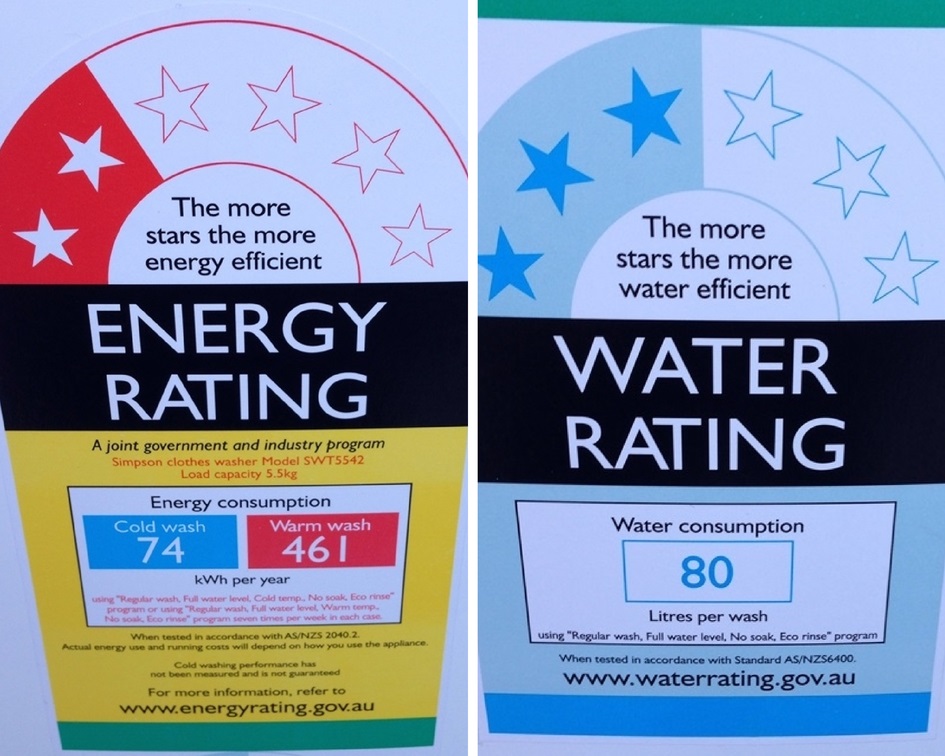
- It’s voluntary so I doubt that manufacturers with low Ratings will bother to print them on their pack. Who wants to advertise that your food has only 1 or 2 Stars? Unlike electrical goods with their energy or water rating, this is a voluntary scheme. So consumers won’t get to see those foods high in sugar, salt and saturated fat that they should NOT be buying. I hope I’m wrong so I’ll wait and watch.
What the Health Stars CAN help you with
Compare similar products within a category e.g. two breakfast cereals side by side.
Examples of how many Stars your favourite food will score
I’ve done the work using the Calculator (Excel) supplied by the website and here are a few comparisons. The Rating does rate junk, processed, unhealthy food poorly with less than 1 Star while rewarding whole, healthy, unprocessed items a high of 5 Stars – which is as it should be.
| Apple | 5 Stars |
| Cola soft drink | 1 |
| Nutella | ½ |
| Hazelnut chocolate | ½ |
| Mars Bar | ½ |
| Weet Bix/Vita-Brits | 4½ |
| Coco Pops | 1½ |
| Sugar | ½ |
| Honey | 1 |
| Agave | 1½ |
| Golden syrup | 1½ |
| Brown rice syrup | 1½ |
The bottom line
I commend the Health Ministers for taking the initiative to develop this new Health Star Rating system but it’s a very complicated way of working out which foods can carry the stars.
It doesn’t give you all you need to decide whether to buy a packaged food or not but it’s handy for in-category comparisons, assuming your favourite brand has decided to take part.
I see only the large manufacturers with their teams of dietitians and food technologists being able to utilise the Health Star Rating, especially the method for calculating the percentage of concentrated and non-concentrated fruit or vegetables e.g. in smoothies, bars or cereals. It’s way too hard for smaller and boutique operators.
I’ll reserve my final judgement until I see consumers using it over the next few months.
Health Star Rating labelling update
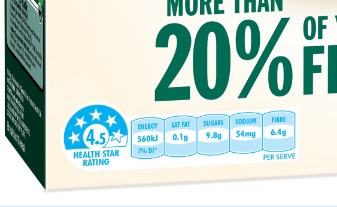
Uncle Toby's are implementing the Health Star Rating across all their breakfast cereals in 2015. Their website has been updated to include the Health Star Rating describing what it means, how to read it on pack, and give a Rating to each of their breakfast cereal. See HSR example in the image from their Plus Fibre cereal. Go to http://www.uncletobys.com.au/health-nutrition/health-star-rating/.
Government website finally live
The Health Star Rating website launched in 2014 to help consumers get to know the new front-of-pack system at www.healthstarrating.gov.au.
Save
Save
Save
Save
You may also be interested in...
References / External articles
Jemma O'Hanlon
The Good Stuff
The Boring Stuff
© 2025 Foodwatch Australia. All rights reserved
Website by Joomstore eCommerce





